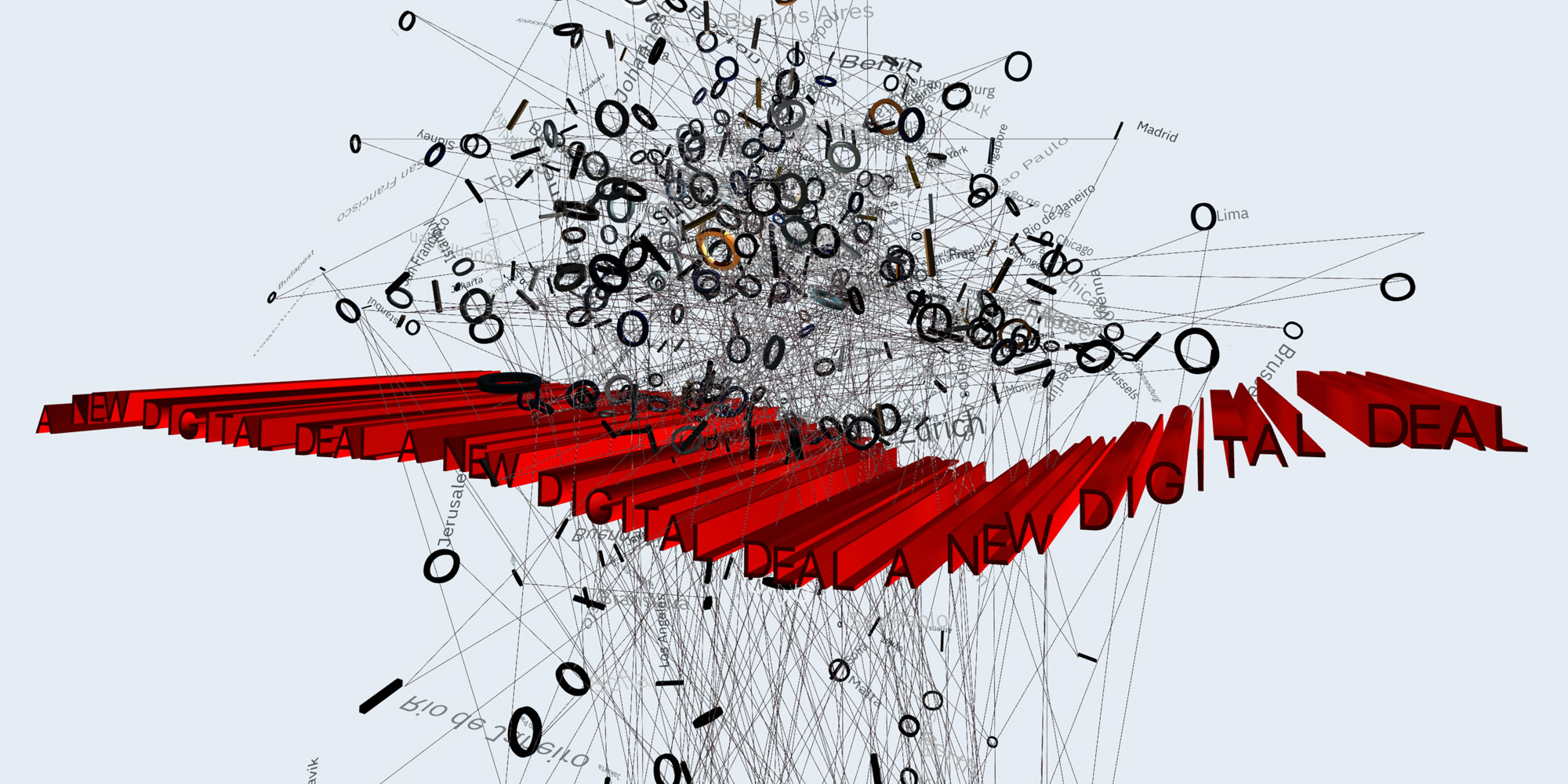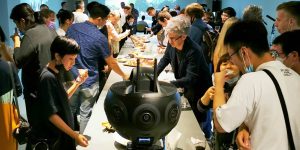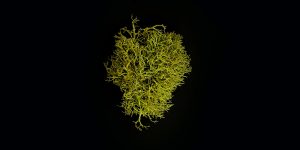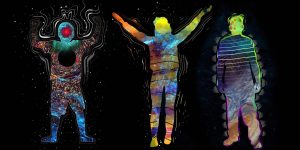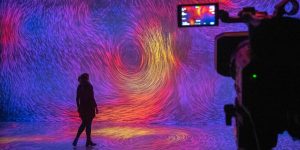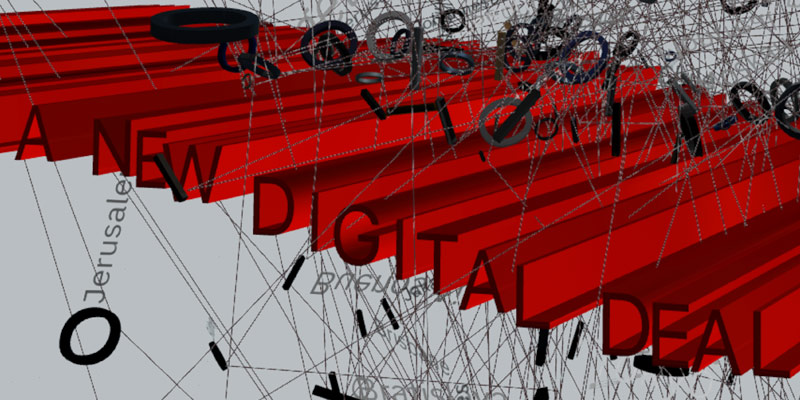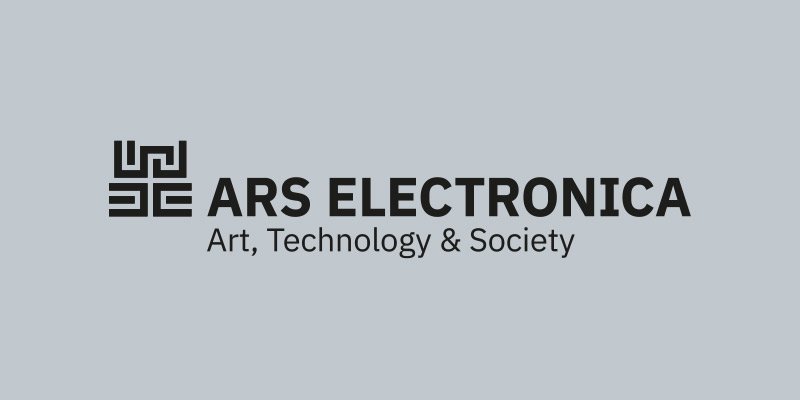Calendar
Locations
Exhibitions, Projects
Conferences, Lectures, Workshops
Events, Concerts, Performances
create your world
WE GUIDE YOU Guided Tours
Guest Projects
European Plattform for Digital Humanism
STARTS
AI Lab
Animation Festival
Prix Ars Electronica
Schedule
Ars Electronica Gardens
Topics
Schedule
Talks & Lectures
Workshops
Journeys
Guided Tours
Events, Concerts, Performances
Community Events
Community Projects
European Platform for Digital Humanism
STARTS
AI Lab
Animation Festival
Prix Ars Electronica
Social Media Wall
Festival for…
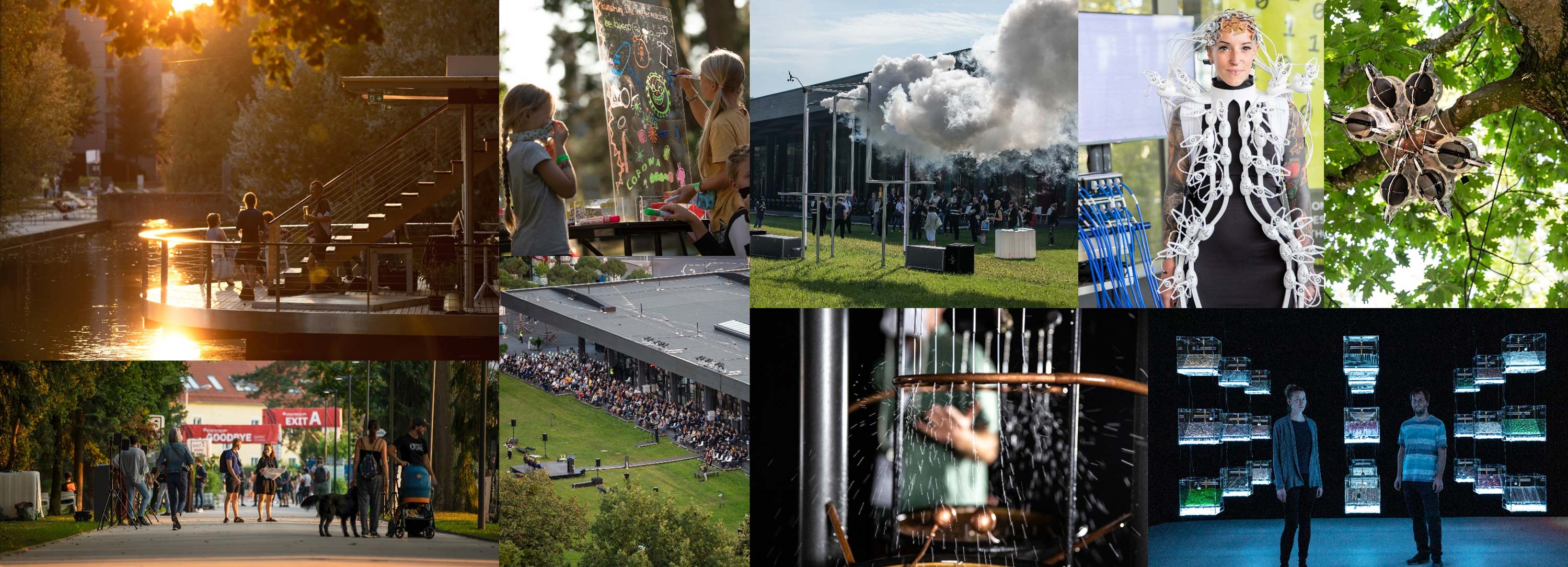
From left to right: (1) Teichwerk at JKU Campus Linz, Credit: vog.photo; (2) create your world, Credit: vog.photo; (3) Ethereal Fleeting / Lukas Truniger, Itamar Bergfreund, Bruce Yoder, Credit: vog.photo; (4) The Pangolin Scales / Thomas Faseth, Harald Pretl, Christoph Guger, Anouk Wipprecht, Credit: tom mesic; (5) A Diverse Monoculture / Jip van Leeuwenstein, Credit: tom mesic; (6) JKU Campus Linz, Credit: vog.photo; (7) Kepler Hall at JKU Campus, Credit: tom mesic; (8) Dancing Water / Leon Kainz, Credit: tom mesic; (9) The Transparency of Randomness / Mathias Gartner, Vera Tolazzi, Credit: vog.photo
Linz as a central festival hub
In Linz, Austria, the festival for art, technology and society was initiated in 1979, here this festival is strongly rooted after more than four decades and counts once again on the power of local supporters.
The expansive parks and large buildings on the Johannes Kepler University Linz campus will once again be of particular benefit to Ars Electronica: for artistic performances and concerts, for lectures and conferences, but of course also for exhibitions and guided tours. Not only will the “Big Concert Night” with the Bruckner Orchestra Linz resound here, but the interplay of art and science will become visible, in exhibitions by the Linz Institute of Technology (LIT) and the prize-winning projects of the European Commission’s STARTS Prize 2021. The green area on the outskirts of the city will once again present itself with “create your world” as an inspiring and corona-ready playground for children and parents who love to experiment.
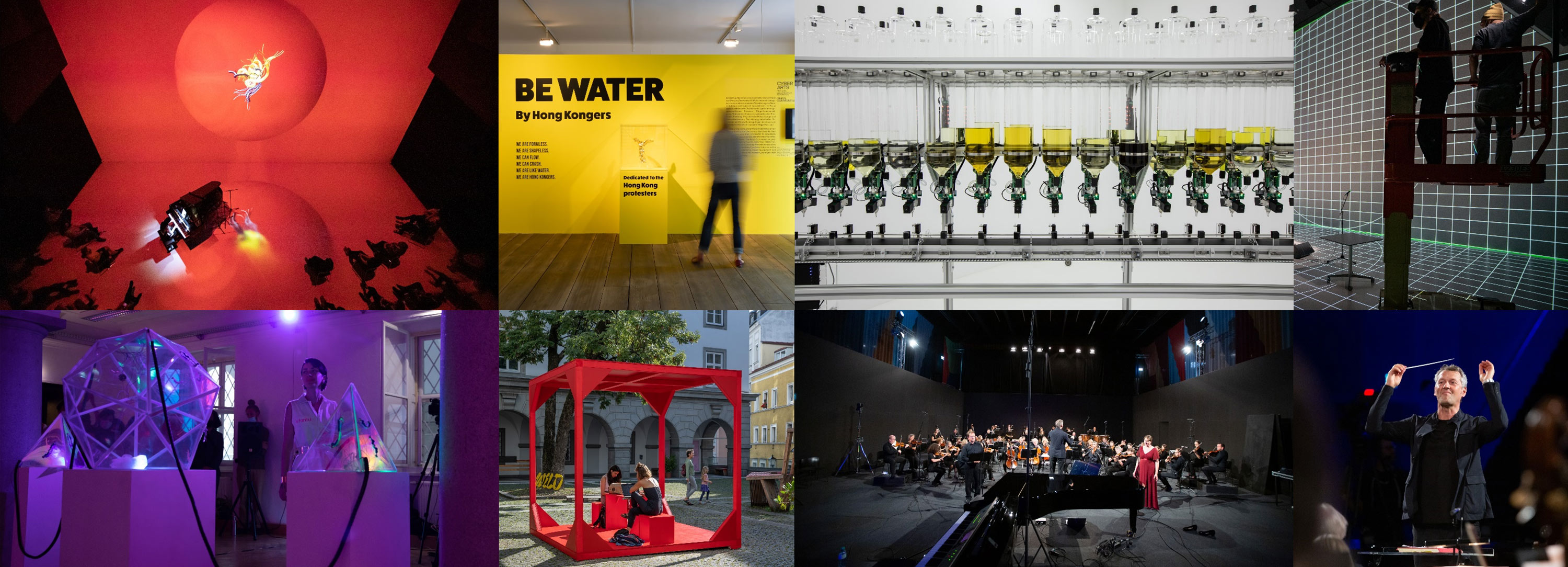
From left to right: (1) Deep Space 8K at Ars Electronica Center: Pianographique / Maki Namekawa, Cori O‘Lan, Credit: vog.photo; (2) CyberArts Exhibition at OK OÖ Kulturquartier: Be Water / Hong Kongers, Credit: vog.photo; (3) CyberArts Exhibition at OK im OÖ Kulturquartier: Algorithmic Perfumery / Frederik Duerinck, Credit: vog.photo; (4) Deep Space 8K at Ars Electronica Center, Credit: Ars Electronica – Robert Bauernhansl; (5) Agora Digitalis, The Wild State 2020 Campus exhibition, Credit: vog.photo; (6) The Wild State exhibition at the University of Art and Design Linz, Credit: vog.photo; (7+8) Big Concert Night: Bruckner Orchester Linz / Credit: tom mesic
In Linz’s city center, the OÖ Landes-Kultur GmbH is staging the CyberArts show at the OK in the OÖ Kulturquartier and presenting a selection of the year’s best media artworks, chosen by an international jury as part of the Prix Ars Electronica 2021. In addition to excellent computer animations, the focus this time is on “Artificial Intelligence & Life Art” and “Digital Musics & Sound Art.” In addition to the traditional exhibition of “Interface Cultures,” the Linz University of Art and Design will be presenting a large show with various international partner universities. Of course, the Ars Electronica Center will once again be open to visitors with its major exhibition on artificial intelligence, with two more new exhibitions as well as visual gems in Deep Space 8K. The Ars Electronica Futurelab will also be presenting highlights to mark its 25th anniversary. Daily guided tours of various locations in the city round out the offerings for the local public.

From left to right: (1) Project Alias / Bjørn Karmann, Tore Knudsen, Credit: Jürgen Grünwald; (2) Clams / Marco Barotti, Credit: vog.photo; (3) European Platform for Digital Humanism, Credit: Ars Electronica; (4) Ciutat Vella’s Land-use Plan / 300.000 Km/s, Credit: Jürgen Grünwald; (5) Kinetic Garden / Christiaan Zwanikken, Credit: Cheryl Schurgers; (6) Orogenesis Spacial Piano Improvisation Inspired by the Formation of Mountains / Rupert Huber, Credit: vog.photo; (7) MegaPixels / Adam Harvey, Jules LaPlace, Credit: Ars Electronica – Martin Hieslmair; (8) SEER Simulative Emotional Expression Robot / Takayuki Todo, Credit: Ars Electronica / Martin Hieslmair
Europe-wide networks
As a platform for art, technology and society, Ars Electronica has always understood bridge-building between disciplines and industries not as an annoying necessity but as a promising matter of course. For some years now, this is precisely what has been increasingly demanded and promoted at the European level. From the STARTS and the new Bauhaus initiatives to the European Media Art Platform, the European ARTificial Intelligence Lab and STUDIOTOPIA Residency Program to the Erasmus + Knowledge Alliance Steam Inc. or spaceEU – Ars Electronica is involved today as a major player in a large number of European initiatives and networks. The festival is a platform, stage, forum and laboratory at the same time for presenting and discussing interim results together with its many partners.
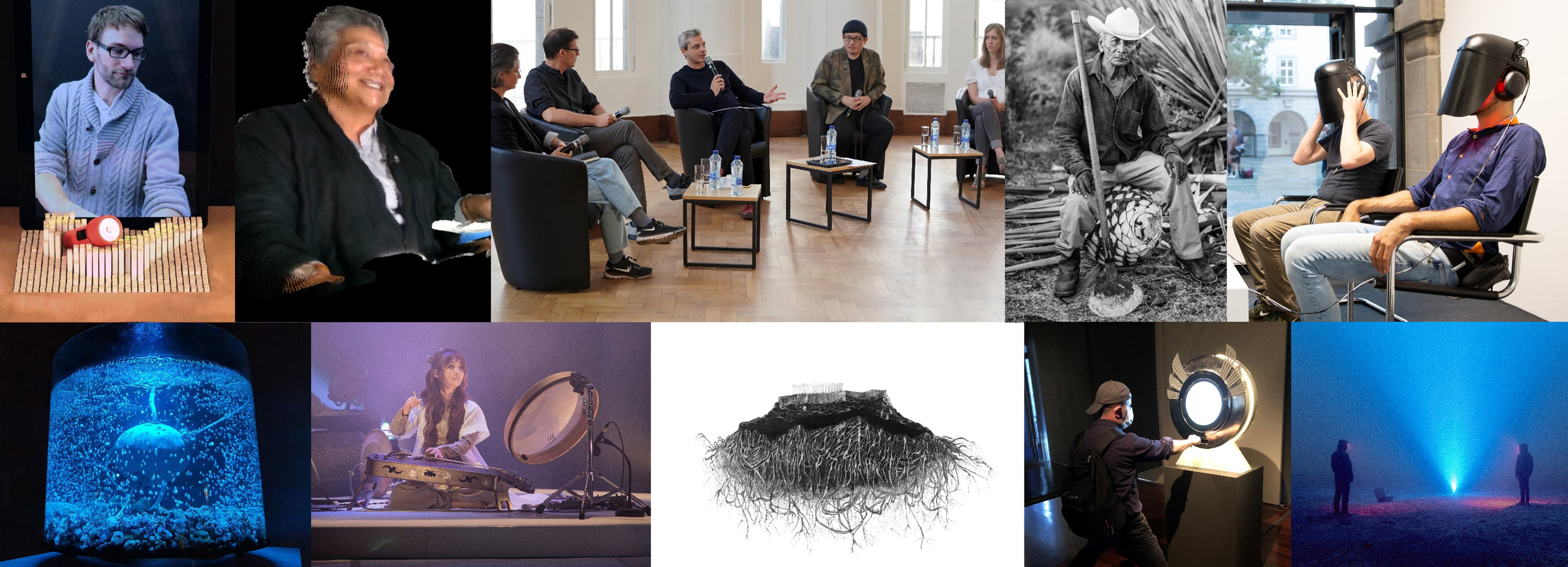
From left to right: (1) inFORM / Tangible Media Group, MIT Media Lab; (2) Datagarden2020 / Kyriaki Goni, Credit: Kyriaki Goni; (3) Talk: Genetic Biotech through the Eyes of Artists, Credit: BOZAR; (4) Tech-ila ARTesano Coolture / Mad Machina, Credit: Néstor Barrera; (5) Hexagram: Sensum / Alexandre Saunier, Credit: tom mesic; (6) EMAP: Archaeabot / Anna Dumitriu, Alex May, Credit: Anna Dumitriu, Alex May; (7) Performance ‘Two Hands’ / Kyunghwa Yu, Credit: Kyunghwa Yu; (8) New Home of Mind / Mónica Rikić, Credit: Roberta Bosco; (9) First Contact / Mairi Gunn, Wendy Lawn, Prasanth Sasikumar, Huidong Bai, Credit: Mairi Gunn, Wendy Lawn, Prasanth Sasikumar, Huidong Bai; (10) SPACE / EARTH / WATER TRIAD / PRISMA: Art, Science, Technology, Credit: Sebastián Arriagada
More than 80 partners around the world
In times of a pandemic, of all things, the previous year already showed just how far-reaching Ars Electronica’s cooperative networks have become. In 2021, the festival will once again be held not only in Linz but at more than 80 locations around the world. Numerous partner institutions are once again participating with on-site events as well as a broad spectrum of online offerings: MIT in Boston, an entire arts and culture network in Barcelona, BOZAR in Brussels, the Onassis Foundation in Greece, the University of Auckland & Victoria and the University of Wellington in New Zealand, the Chilean Ministry of Foreign Affairs and Culture, and many others have already confirmed their participation.
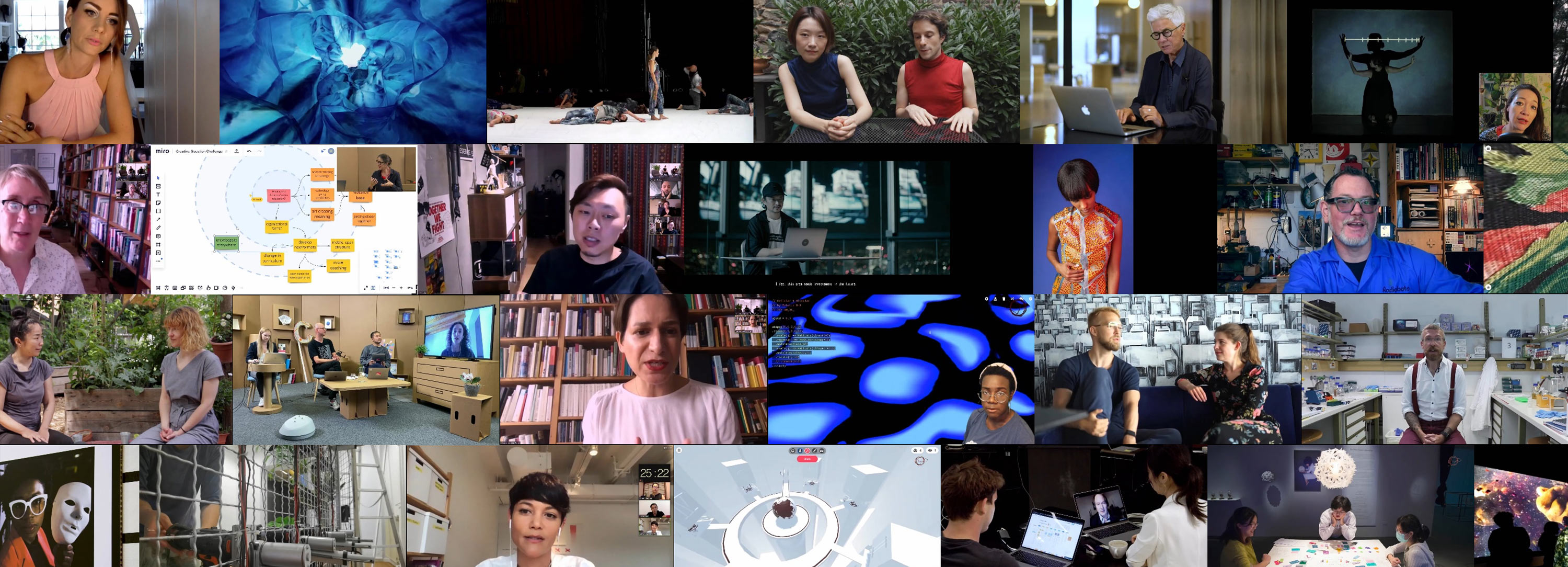
Screenshots from the Ars Electronica Selection Channel during the Ars Electronica Festival in September 2020
The festival as a hybrid event
Another central arena of this festival will be the Internet (again). Gone are the days when activities on the net were primarily for promotion – in the future, the focus here will be on the interplay of programs in real and digital space. What’s needed are innovative formats and new, accessible forms of interaction. On the one hand, many more people should be able to experience a festival in the future, and on the other, they should be able to do so in an entertaining and appealing way. Since last year, a great deal of experimentation has been going on with hybrid event formats, virtual and interactive mediation and interaction tools. Hybrid Ars Electronica 2021 will continue to drive these developments forward.
